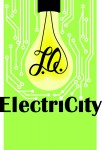From pastel to dark olive green, different neighborhoods across the Los Angeles area light up on an interactive online map.
With the click of the “play” button on the map, a foliage of greens flashes on the screen, depicting changes in energy use over a period of 18 months.
Researchers at the UCLA California Center for Sustainable Communities launched the online map, which depicts the average monthly energy consumption of various L.A. neighborhoods, last month. The researchers have said the map is the first tool to chart energy use in L.A. neighborhoods during a given period of time.
There has been a general lack of information about energy usage that is accessible to the public, said Jackie Murdock, the main creator of the map and a graduate student in the Department of Urban Planning.
“(The map) aims to establish a baseline rate of energy consumption as it changes over time and space,” said Stephanie Pincetl, director of the center, who said she oversaw the mapping project.
Businesses and individual households can use the map to evaluate their energy efficiency plans, she said.
The energy map shows that UCLA and Westwood generally have higher monthly average energy consumption compared to other areas of Los Angeles.
UCLA and Westwood occupy areas with high building density, meaning that there are more buildings per unit area, especially high-rise buildings, Pincetl said.
As a result, there will naturally be higher energy consumption in general in the area, she said.
To create the map, the UCLA California Center for Sustainable Communities used customer electricity usage data over 18 months, from January 2011 to June 2012, according to the center’s website.
Because of privacy concerns, however, individual customers’ data is withheld and only data at the district level can be viewed.
The types of buildings in each neighborhood also affect the energy consumption values, Murdock said.
“A higher average is not necessarily a bad thing. … UCLA is a large economic growth center and Westwood has a lot of commercial buildings,” she said.
Some Westwood business owners expressed doubt about the potential usefulness of the new map.
The information from the map would not be useful for his business, said Berry Fdin, owner of London Cleaners in Westwood.
“All the (washing) machines take up so much energy, there isn’t much I can do to cut costs, except turning them off,” he said.
It is difficult to compare energy use across neighborhoods because buildings in the L.A. area have different densities and uses, Murdock said.
Although the map provides details on the composition of different types of buildings in each neighborhood – industrial, residential or commercial – it is not clear how exactly these differences affect the average monthly consumption values within certain neighborhoods, she said.
“The purpose of this map is not to pinpoint which areas are using more energy and say that it’s bad, but to compare how energy consumption changes over time and across space,” she said.
Moving forward, researchers plan to add energy consumption rates for other parts of California to their energy map, and include additional pieces of information like average household size, Pincetl said.

If you are interested in viewing the map, you can see it here: http://sustainablecommunities.environment.ucla.edu/